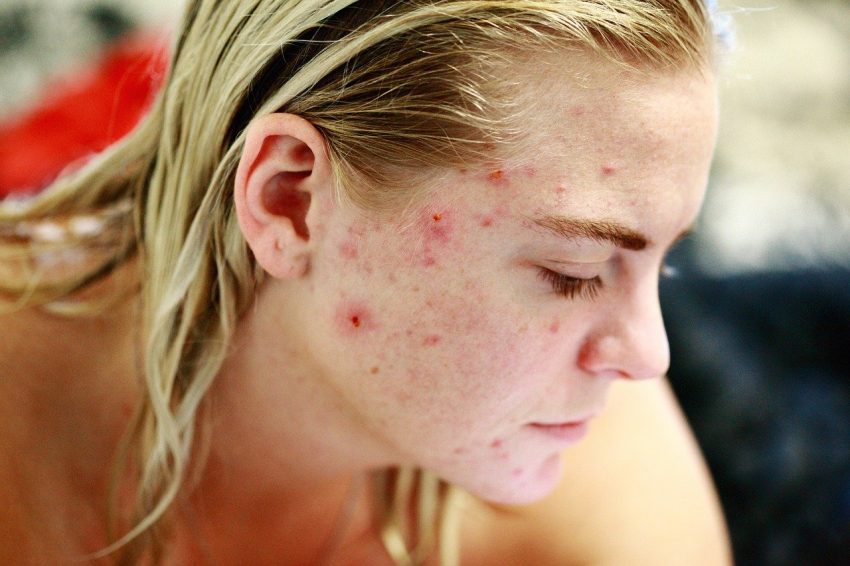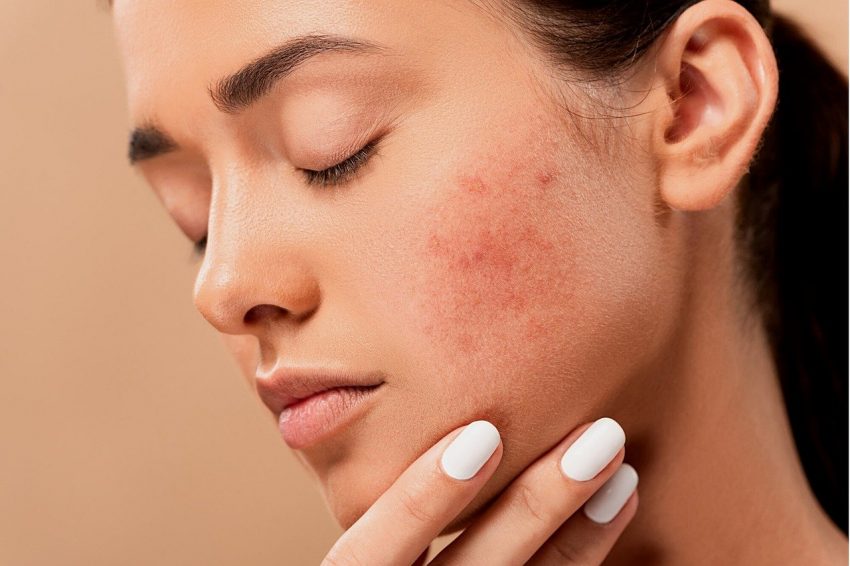Changes in our skin as we age are inevitable, including loss of moisture, changes in…

Acne Scarring: The Lowdown
A common skin condition for many from their teens onward, acne affects most people at some point in their lives. Most often developed on the face, acne can also develop on the back and chest, and consists of several types of spots that can be painful to the touch. Worse still though can be the scarring acne can leave behind.
Most people with acne find themselves with one or more (or any combination) of either blackheads, whiteheads, pustules, papules, nodules or cysts. Each of these is different in appearance, and some can lead to permanent scarring.
At the Cambridge Laser Clinic, we can treat acne scarring in a variety of ways using state-of-the-art techniques. But it’s important to understand what we mean when we talk about acne scarring, to know how it’s caused and whether it’s possible to prevent it.
What do we mean by acne scarring?
Acne scarring can refer to a combination of after-effects from various types of acne. This can include pigmentation (where patches of the skin are lighter or darker than the surrounding skin), or pitted scarring.
Pitted acne scarring often makes the face look dimpled and the surface uneven, even after the original blemishes are fully healed. It’s usually what we think of when we think of acne scarring.
How is pitted acne scarring caused?
Of the 6 types of spots that make up acne, not all of them leave pitted scarring. The three that most often leave permanent marks on the skin are cysts, papules and pustules.
This is because of the way these spots form, in the bottom layers of the skin, deep under the surface. As a cyst, papule or pustule heals, it disappears to leave a gap behind it, between the layers of your skin. To accommodate for this, the upper layers of skin sink downward, filling the gap and leaving the surface of the skin with the appearance of “pits” or dimples. This is why we call it pitted acne scarring.
Pitted Acne Scarring Types
There are actually several types of pitted acne scarring that appear differently on the surface of the skin. Some people with acne may be more susceptible to pitted skin for a variety of reasons, from genetics, to collagen levels to simply having thinner skin.
Regardless of your susceptibility, there are three possible types of pitted acne scarring:
- Rolling Scars are the most shallow, but can leave wide indentations that give the skin an uneven, wavy appearance.
- Box Scars are steeper, usually round and look much like chickenpox scars.
- Ice Pick Scars are the deepest type of acne scarring, though they are narrower than rolling scars. They often resemble large, open pores.
At the Cambridge Laser Clinic, we can use a combination of laser treatments depending on which type of acne scarring you want to improve, from one to all.
Pigmented Acne Scarring
In addition to pitted acne scarring, acne can also leave behind changes in the pigmentation of your skin.
Sometimes referred to as macular scars, these dark marks are left behind once your acne has healed, and are a result of an increased amount of melanin in the skin. Though usually less permanent than other types of acne scarring, they can still take years to disappear on their own if left untreated.
You may notice that some acne scars appear red, pink, or even purplish in colour. This is also due to a build-up of melanin in your skin. However, if the red area is still swollen or inflamed in any way, this is likely not scarring, but active acne.
This “post-inflammatory hyperpigmentation”, as it’s also called, is more common in those with darker skin tones.
How can I prevent acne scarring?
Unfortunately, there’s no guaranteed way to prevent acne scarring from occurring in the first place. However, there are several things you can do to minimise your risk of scarring.
- DO NOT squeeze, pick or scratch at your acne spots, as this can lead to infection and skin damage.
- Protect your skin from the sun and harmful UV rays by using SPF protection. Opt for protection that allows your skin to breathe and doesn’t further clog your pores and worsen your acne.
- Check out our essential skincare rules for every age group and see if you can improve your skincare routine.
- Whilst your acne is still active, seek medical advice from a doctor or dermatologist. They will be able to advise you of suitable professional treatments and medications specifically designed to target acne.
How permanent are acne scars?
This entirely depends on how well you treat your acne while it’s active.
Often, the red and brown pigmentation left behind once your acne heals can fade on its own, with no need for further treatment. However, if you have picked at, touched or squeezed your spots, this can increase the risk of scars forming.
How can I remove my acne scars?
Like many types of scarring, acne scarring can seem very permanent. However, there are several effective treatments available here at our clinic in Cambridge, with proven results.
The most appropriate treatment for your acne scarring depends entirely on the type of scarring you have, as different types of scars require different technologies. Before you undergo any procedures, our Cambridge treatment experts will sit down for a consultation with you, to discuss your needs, your acne scarring, and the most appropriate treatment.
Acne Scarring Treatments at Cambridge Laser Clinic
At the Cambridge Laser Clinic, our acne experts are able to recommend a treatment for your acne scarring needs, designed specifically around the types of scars you wish to minimise.
Using a variety of technologies, we can work with you to propose the most optimal treatment (or treatments) to diminish the appearance of your acne scars.
In addition to our treatments and skin resurfacing here in Cambridge, our sister company, The Body Works Clinic, can also provide additional treatments that have been proven successful at reducing the appearance of acne scarring; these include chemical peels, microneedling and skin-tox treatments.





